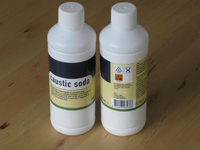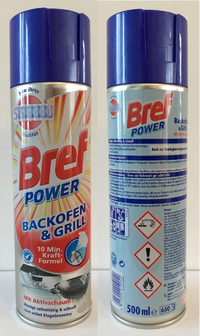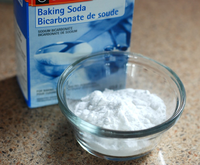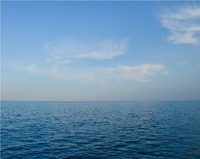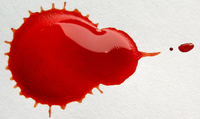Difference between revisions of "Base"
| Line 61: | Line 61: | ||
:[https://www.amazon.co.uk/gp/product/1782945571/ref=as_li_tl?ie=UTF8&camp=1634&creative=6738&creativeASIN=1782945571&linkCode=as2&tag=nrjc-21&linkId=9e29fad914244909903e5e93f8a01d56 ''Bases, pages 51, 54, GCSE Chemistry; The Revision Guide, CGP, AQA ''] | :[https://www.amazon.co.uk/gp/product/1782945571/ref=as_li_tl?ie=UTF8&camp=1634&creative=6738&creativeASIN=1782945571&linkCode=as2&tag=nrjc-21&linkId=9e29fad914244909903e5e93f8a01d56 ''Bases, pages 51, 54, GCSE Chemistry; The Revision Guide, CGP, AQA ''] | ||
:[https://www.amazon.co.uk/gp/product/0198359381/ref=as_li_tl?ie=UTF8&camp=1634&creative=6738&creativeASIN=0198359381&linkCode=as2&tag=nrjc-21&linkId=47c8d1ae58d8b3a5e2094cd447154558 ''Bases, pages 92-93, 96-97, 163, GCSE Chemistry; Third Edition, Oxford University Press, AQA ''] | :[https://www.amazon.co.uk/gp/product/0198359381/ref=as_li_tl?ie=UTF8&camp=1634&creative=6738&creativeASIN=0198359381&linkCode=as2&tag=nrjc-21&linkId=47c8d1ae58d8b3a5e2094cd447154558 ''Bases, pages 92-93, 96-97, 163, GCSE Chemistry; Third Edition, Oxford University Press, AQA ''] | ||
| + | ====Edexcel==== | ||
| + | :[https://www.amazon.co.uk/gp/product/1782945741/ref=as_li_tl?ie=UTF8&camp=1634&creative=6738&creativeASIN=1782945741&linkCode=as2&tag=nrjc-21&linkId=30da4f2178da182547b62a7329d13b57 ''Bases (acids and bases), pages 105, 107, GCSE Combined Science; The Revision Guide, CGP, Edexcel ''] | ||
| + | :[https://www.amazon.co.uk/gp/product/1292120193/ref=as_li_tl?ie=UTF8&camp=1634&creative=6738&creativeASIN=1292120193&linkCode=as2&tag=nrjc-21&linkId=572df39392fb4200db8391d98ae6314e ''Bases, page 200, GCSE Combined Science, Pearson Edexcel ''] | ||
| + | :[https://www.amazon.co.uk/gp/product/1292120215/ref=as_li_tl?ie=UTF8&camp=1634&creative=6738&creativeASIN=1292120215&linkCode=as2&tag=nrjc-21&linkId=8f96ddb76196848bafdb124354e4cf77 ''Bases, page 56, GCSE Chemistry, Pearson, Edexcel ''] | ||
| + | :[https://www.amazon.co.uk/gp/product/1782948147/ref=as_li_tl?ie=UTF8&camp=1634&creative=6738&creativeASIN=1782948147&linkCode=as2&tag=nrjc-21&linkId=f63dcd8345f4e49c717b39a228a36c7c ''Bases, pages 118-121, GCSE Chemistry, CGP, Edexcel ''] | ||
| + | :[https://www.amazon.co.uk/gp/product/1782945725/ref=as_li_tl?ie=UTF8&camp=1634&creative=6738&creativeASIN=1782945725&linkCode=as2&tag=nrjc-21&linkId=694be7494de75af3349537d34e13f7f0 ''Bases, pages 43, 45, GCSE Chemistry; The Revision Guide, CGP, Edexcel ''] | ||
| + | :[https://www.amazon.co.uk/gp/product/1782945741/ref=as_li_tl?ie=UTF8&camp=1634&creative=6738&creativeASIN=1782945741&linkCode=as2&tag=nrjc-21&linkId=30da4f2178da182547b62a7329d13b57 ''Bases; reactions of, pages 107, 109, GCSE Combined Science; The Revision Guide, CGP, Edexcel ''] | ||
| + | :[https://www.amazon.co.uk/gp/product/1782945725/ref=as_li_tl?ie=UTF8&camp=1634&creative=6738&creativeASIN=1782945725&linkCode=as2&tag=nrjc-21&linkId=694be7494de75af3349537d34e13f7f0 ''Bases; reactions of, pages 45, 47, GCSE Chemistry; The Revision Guide, CGP, Edexcel ''] | ||
Revision as of 14:15, 2 November 2019
Contents
Key Stage 3
Meaning
A base is a metal compound with a pH greater than 7.
About Bases
- A base can be Harmful, Irritant or corrosive.
- Bases can neutralise an acid.
- Many bases are insoluble solids.
- A base can be a:
- Metal Hydroxides are soluble bases known as 'Alkalis'.
Examples
| Drain cleaner is around pH 14. | Oven cleaner is around pH 13.5. | Toilet cleaner is around pH 12. |
| Baking soda is around pH 9.5. | Sea water is around pH 8. | Blood is around pH 7.4. |
Key Stage 4
Meaning
A base is a compound which is able to produce OH- ions when dissolved in water to form a solution with a pH greater than 7.
About Bases
- Bases are ionic compounds where there is an ionic bond between a metal and an Oxide, Carbonate or Hydroxide.
- Bases will react with acids to form a salt.
- Some bases are insoluble.
- A soluble base will dissolves in water to produce an alkali which has Hydroxide ions which are either donated by the base or formed by a reaction with water to form a Hydroxide ion.
- The Hydroxide ions in an alkali will donate electrons to Hydrogen ions to form water. This is a neutralisation reaction.
Extra Information
References
AQA
- Bases, page 204, GCSE Biology; Third Edition, Oxford University Press, AQA
- Bases, page 246, GCSE Biology, CGP, AQA
- Bases, page 247, GCSE Combined Science Trilogy 1, Hodder, AQA
- Bases, page 280, GCSE Chemistry, Hodder, AQA
- Bases, pages 128, 129, GCSE Combined Science; The Revision Guide, CGP, AQA
- Bases, pages 130-132, GCSE Combined Science Trilogy; Chemistry, CGP, AQA
- Bases, pages 155-157, GCSE Chemistry, CGP, AQA
- Bases, pages 51, 54, GCSE Chemistry; The Revision Guide, CGP, AQA
- Bases, pages 92-93, 96-97, 163, GCSE Chemistry; Third Edition, Oxford University Press, AQA
Edexcel
- Bases (acids and bases), pages 105, 107, GCSE Combined Science; The Revision Guide, CGP, Edexcel
- Bases, page 200, GCSE Combined Science, Pearson Edexcel
- Bases, page 56, GCSE Chemistry, Pearson, Edexcel
- Bases, pages 118-121, GCSE Chemistry, CGP, Edexcel
- Bases, pages 43, 45, GCSE Chemistry; The Revision Guide, CGP, Edexcel
- Bases; reactions of, pages 107, 109, GCSE Combined Science; The Revision Guide, CGP, Edexcel
- Bases; reactions of, pages 45, 47, GCSE Chemistry; The Revision Guide, CGP, Edexcel
